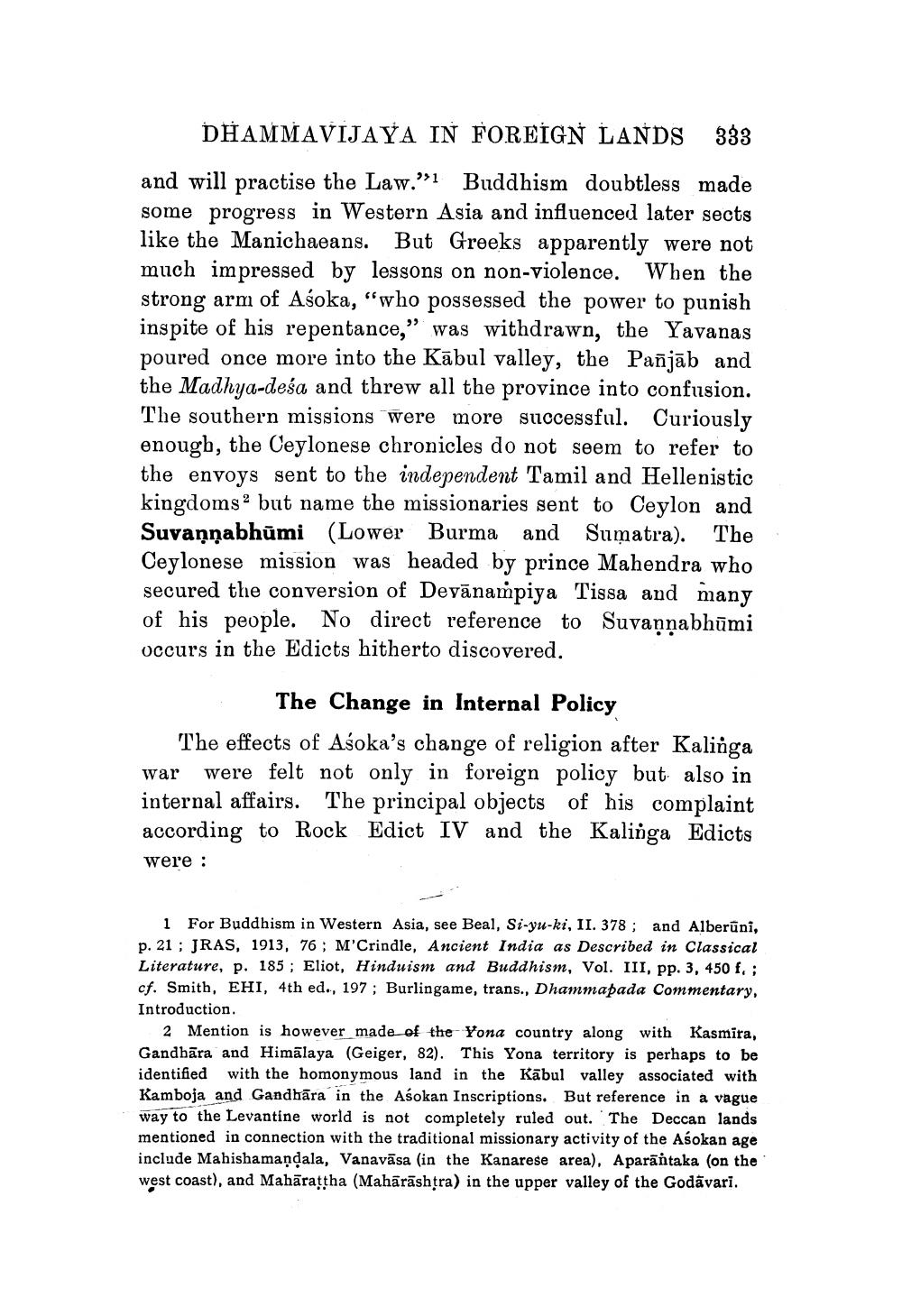________________
DHAMMAVIJAYA IN FOREIGN LANDS 333
and will practise the Law." Buddhism doubtless made some progress in Western Asia and influenced later sects like the Manichaeans. But Greeks apparently were not much impressed by lessons on non-violence. When the strong arm of Aśoka, "who possessed the power to punish inspite of his repentance," was withdrawn, the Yavanas poured once more into the Kabul valley, the Pañjāb and the Madhya-desa and threw all the province into confusion. The southern missions were more successful. Curiously enough, the Ceylonese chronicles do not seem to refer to the envoys sent to the independent Tamil and Hellenistic kingdoms but name the missionaries sent to Ceylon and Suvaņṇabhūmi (Lower Burma and Sumatra). The Ceylonese mission was headed by prince Mahendra who secured the conversion of Devanampiya Tissa and many of his people. No direct reference to Suvaṇnabhumi occurs in the Edicts hitherto discovered.
The Change in Internal Policy
war
The effects of Aśoka's change of religion after Kalinga were felt not only in foreign policy but also in internal affairs. The principal objects of his complaint according to Rock Edict IV and the Kalinga Edicts
were:
1 For Buddhism in Western Asia, see Beal, Si-yu-ki, II. 378; and Alberūni, p. 21; JRAS, 1913, 76; M'Crindle, Ancient India as Described in Classical Literature, p. 185; Eliot, Hinduism and Buddhism, Vol. III, pp. 3, 450 f.; cf. Smith, EHI, 4th ed., 197; Burlingame, trans., Dhammapada Commentary, Introduction.
2 Mention is however made of the Yona country along with Kasmira, Gandhara and Himalaya (Geiger, 82). This Yona territory is perhaps to be identified with the homonymous land in the Kabul valley associated with Kamboja and Gandhara in the Aśokan Inscriptions. But reference in a vague way to the Levantine world is not completely ruled out. The Deccan lands mentioned in connection with the traditional missionary activity of the Aśokan age include Mahishamaṇḍala, Vanavāsa (in the Kanarese area), Aparantaka (on the west coast), and Mahāraṭṭha (Mahārāshtra) in the upper valley of the Godavari.




